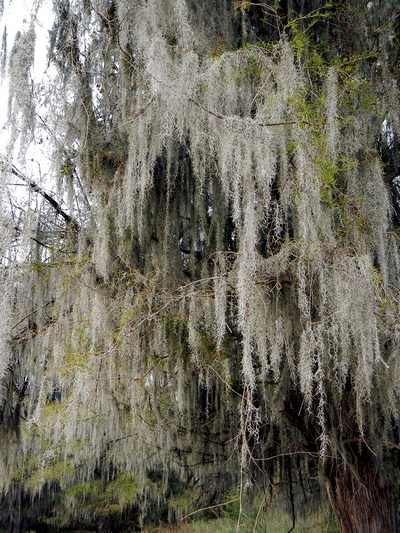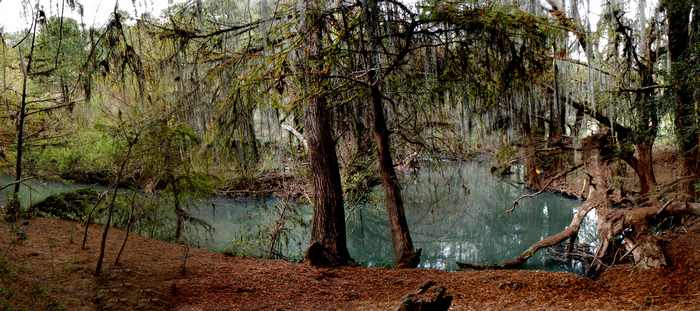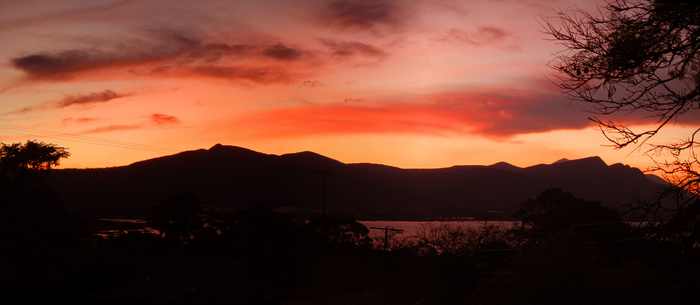|
By John Pint
 Do you know way to San José? Of course, I mean San José de Gracia, one
of the most dynamic little towns in western Mexico, located 80
kilometers SE of Guadalajara and about 90 minutes from Jocótepec.
Do you know way to San José? Of course, I mean San José de Gracia, one
of the most dynamic little towns in western Mexico, located 80
kilometers SE of Guadalajara and about 90 minutes from Jocótepec.
“You have to visit San José,” my friend Alejandro Solís insisted.
“You'll love the projects they´re doing along El Río de la Pasión and
you can even go hunting for dinosaur bones.”
Naturally, I accepted Alex's offer and off we drove to San José, which
lies eight kilometers due north of Mazamitla, just over the Michoacán
state line. We started out by visiting the town hall where we found a
curious “cartoon mural” depicting San José's most illustrious sons. One
of them was wearing an eye patch and I soon discovered his name was
Luis González y González, a world-famous historian. He is also said to
be the inventor of “Microhistory” as well as the founder of the Colegio
de Michoacán, that marvelous institute which supported archaelogist
Phil Weigand's discoveries when “the powers that be” were lined up
against him.
In the town hall we met the local Director of Rural Development,
Ecology and Tourism, Mr. Jorge González, who has found all sorts of
fascinating fossils in this neck of the woods.
We jumped into Jorge's truck and drove for about two kilometers to a
place called Paso Real where Jorge suddenly pulled off the road and
parked. Next came what I'd call the Quintessential Mexican Hike because
it began with us squeezing through a barbed-wire fence beyond which
there was no path and plenty of thorn bushes. Thus began Jorge's
fascinating introduction to the many fossils in the area. We saw all
sorts of places where bones were literally sticking out of solid rock
walls. It was obvious that long ago these walls were layers of mud or
conglomerate and we were looking at the remains of some poor animal
that got stuck in the muck eons ago.
The most exciting bones were mammoth and gomphothere tusks. “There was
a big lake right here for a long time,” said Jorge, “but about 15,000
years ago it slowly dried up.” 
Our next stop caught me off guard. After passing through low, deserty
scrub, the horizon was suddenly filled with gigantic trees gloriously
festooned with heno (Spanish moss). I gasped. Not only did those trees
resemble Montezuma Cypresses, they seemed to me the most majestic and
beautifully decorated such trees I had ever seen...and I'm including
those which I've seen in Louisiana's bayous as well.
Cypresses in the desert? Was I going crazy?
Not at all, we had reached the northern end of Río de la Pasión a
gorgeous stream 22 kilómeters long linking San José to Tizapán, whose
entire length is dotted with venerable old sabinos (in Spanish), called
ahuehuetes in Náhuatl and Taxodium mucronatum in Latin.
“This river is almost straight and there's a path along its entire
length,” commented Alex Solís, “but maybe its most beautiful point is
right here.”
Indeed, this wide flat place shaded by such huge and stunning trees
looked like every camper's dream come true. The river water, however,
is not drinkable. Nevertheless, said our guides, it's much cleaner than
it was a few years ago and there are projects to clean it up even
further.
Our last stop was the Passion River Ecotourism Center (Ecoturismo Río
de la Pasión) located on a flat mesa above the river. Here are brand
new adobe cabins for rent, a huge meeting hall, a restaurant and even a
museum featuring artifacts found in a nearby tomb. The center boasts
two kilometers of breathtaking ziplines which take you back and forth
between Michoacán and Jalisco, and a spring-fed lagoon filled with
perfectly clean water for swimming and fishing.
Two of the cabins sleep eight persons each and rent for $1200 pesos a
night. The other is even bigger and all three have a kitchenette,
refrigerator and a fireplace. Check out their Facebook
page or call Cell 353 101 3615. Ask for Brenda, who speaks
English and please note: loud music is not allowed!
How to get there
You
can reach San José de Gracia by taking highway 405 for Mazamitla from
the south shore of Lake Chapala. Drive 37 kilometers from the Lake and
turn northeast onto highway 110 heading for Zamora. After 11 kilometers
you'll reach San José. Go one block north past the plaza and turn left
onto Galeana Oriente (the main road to Zamora). Follow this street to
the north end of town and turn left (at N19 59.860 W103 01.185) onto
Camino Agua Caliente which goes north towards Tizapan. After 3.6
kilometers look for an Ecoturismo sign (N20 01.494 W103 01.873) and
turn right (Note that you can reach this point more directly from
Tizapan, mostly on asphalt). Now Follow this road north five kilometers
to Río de la Pasión Ecotourism Center (N20 03.414 W103 01.139). For the
complete route see “Ecoturismo
Pasion” on Wikiloc.com.
The
campsite under the Cypresses (N20 02.874 W103 01.542) on the riverside
requires a high vehicle and may be unreachable in the rainy season.
This route is called “Passion
River Campsite” on Wikiloc.
Driving time from Guadalajara to the Ecotourism Center: about two and a
half hours.
 Sunset at Lake Chapala, seen while returning from a visit to Río de la Pasión
|

